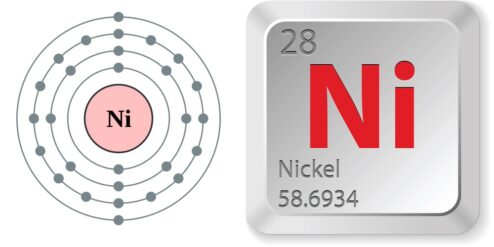Nickel is a naturally occurring mineral, which is present in our environment and has made its way into the food chain. While it is an essential trace element for certain organisms, its role in human nutrition is not yet clearly understood. Some people may develop an allergic reaction to nickel, and for them, knowing which foods are high in nickel can be crucial. This article will delve into the foods that are high in nickel, the impact of nickel on human health, and how to limit its intake through diet.
Understanding the Presence of Nickel in Foods
Nickel is present in the soil and water, and thus, it naturally finds its way into our food chain. The concentration of nickel in food depends on the nickel content of the soil in which the food is grown or the water where it is found. Some food processing methods can also increase the nickel content of food. For instance, canned foods often have higher nickel content due to leaching from the can.
In general, plant-based foods tend to have higher nickel content than animal-based foods. This is because plants absorb nickel from the soil through their roots. However, the actual nickel content can vary widely depending on the specific type of plant and the soil conditions where it is grown.
High Nickel Foods: A Comprehensive List
Some of the foods that are known to have high nickel content include legumes such as peas, lentils, and soybeans; whole grains and cereals; nuts and seeds; chocolate and cocoa; and certain types of fish and shellfish. Some fruits like pineapples, dates, and prunes also contain significant amounts of nickel.
It’s important to note that the cooking process can also affect the nickel content of food. For example, cooking in stainless steel pots and pans can increase the nickel content of the food, especially acidic foods like tomatoes.
The Impact of Nickel on Human Health
In most people, dietary nickel does not pose a health risk. However, some people can develop an allergic reaction to nickel, known as systemic nickel allergy syndrome (SNAS). Symptoms can include skin rashes, itching, and in severe cases, systemic reactions like headache, nausea, and respiratory problems.
Long-term exposure to high levels of nickel has been linked to certain health problems, including lung and nasal cancer, heart disease, and reduced fertility. However, these health risks are primarily associated with occupational exposure to nickel dust and fumes, not dietary nickel.
How to Limit Nickel Intake Through Diet
If you are allergic to nickel or have been advised by your doctor to limit your nickel intake, there are several strategies you can use. First, you can reduce your consumption of high-nickel foods. You can also avoid cooking in stainless steel pots and pans, especially when cooking acidic foods.
Drinking plenty of water can also help to flush out excess nickel from the body. Moreover, certain nutrients, including vitamin C and iron, can reduce the absorption of nickel in the gut. Therefore, consuming foods rich in these nutrients can help to limit nickel absorption.
Nutritional Alternatives to High Nickel Foods
If you need to limit your intake of high-nickel foods, there are plenty of nutritious alternatives available. Instead of whole grains and legumes, you can get your protein from animal-based sources like lean meats, poultry, and fish, which are lower in nickel.
Fruits and vegetables are also generally low in nickel, with the exception of certain high-nickel fruits like pineapples and dates. Dairy products are another good low-nickel option.
The Role of Balanced Diet in Nickel Detoxification
Maintaining a balanced diet is key to managing nickel intake and promoting detoxification. A diet rich in antioxidants, including fruits and vegetables, can help to protect the body against the harmful effects of excess nickel.
Certain nutrients, including vitamin C and iron, can help to reduce the absorption of nickel in the gut. Consuming foods rich in these nutrients can help to limit nickel absorption and promote its excretion from the body.
Nickel is a naturally occurring mineral that is present in many foods. While it does not pose a health risk for most people, those with a nickel allergy need to be mindful of their dietary nickel intake. By understanding which foods are high in nickel and how to limit nickel absorption, you can manage your nickel intake and reduce the risk of adverse health effects.
Per approfondire:
- Nickel in Drinking-water – World Health Organization: This document provides detailed information about the sources of nickel, its presence in drinking water, and its impact on human health.
- Nickel Allergy – Mayo Clinic: This page provides comprehensive information about nickel allergy, including its symptoms, causes, and treatment.
- Nickel – National Institute of Environmental Health Sciences: This page provides information about the health effects of nickel and strategies for reducing exposure.
- Dietary Nickel as a Cause of Systemic Contact Dermatitis – Journal of Clinical and Aesthetic Dermatology: This scientific article discusses the link between dietary nickel and systemic contact dermatitis, a type of skin inflammation.
- Nickel in Food and the Diet – Nickel Institute: This document provides a detailed overview of the presence of nickel in food and its potential health effects.


